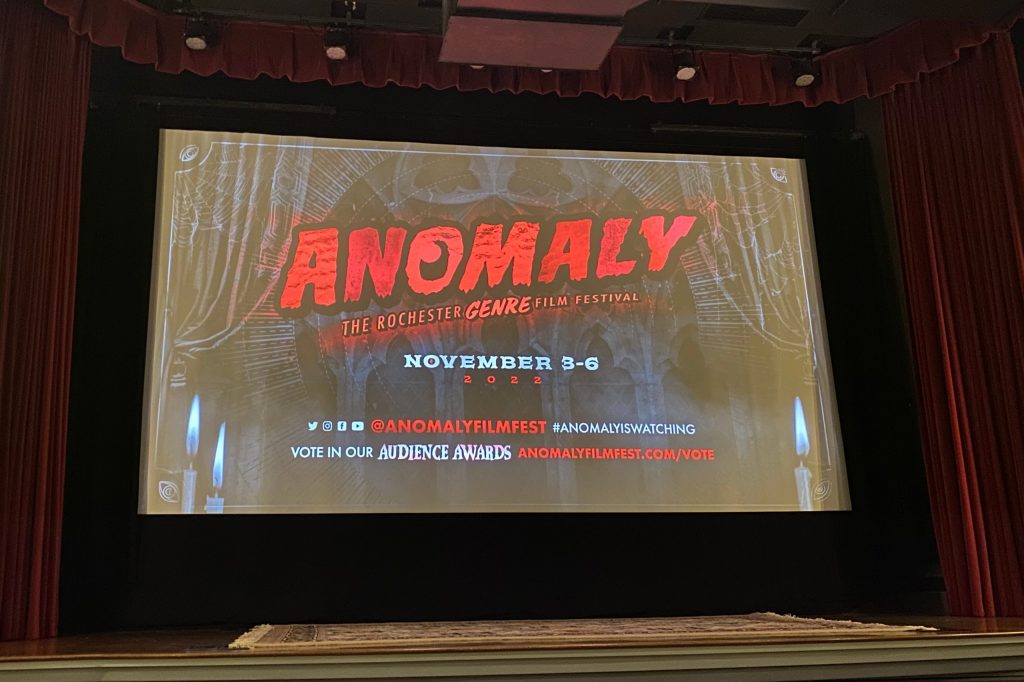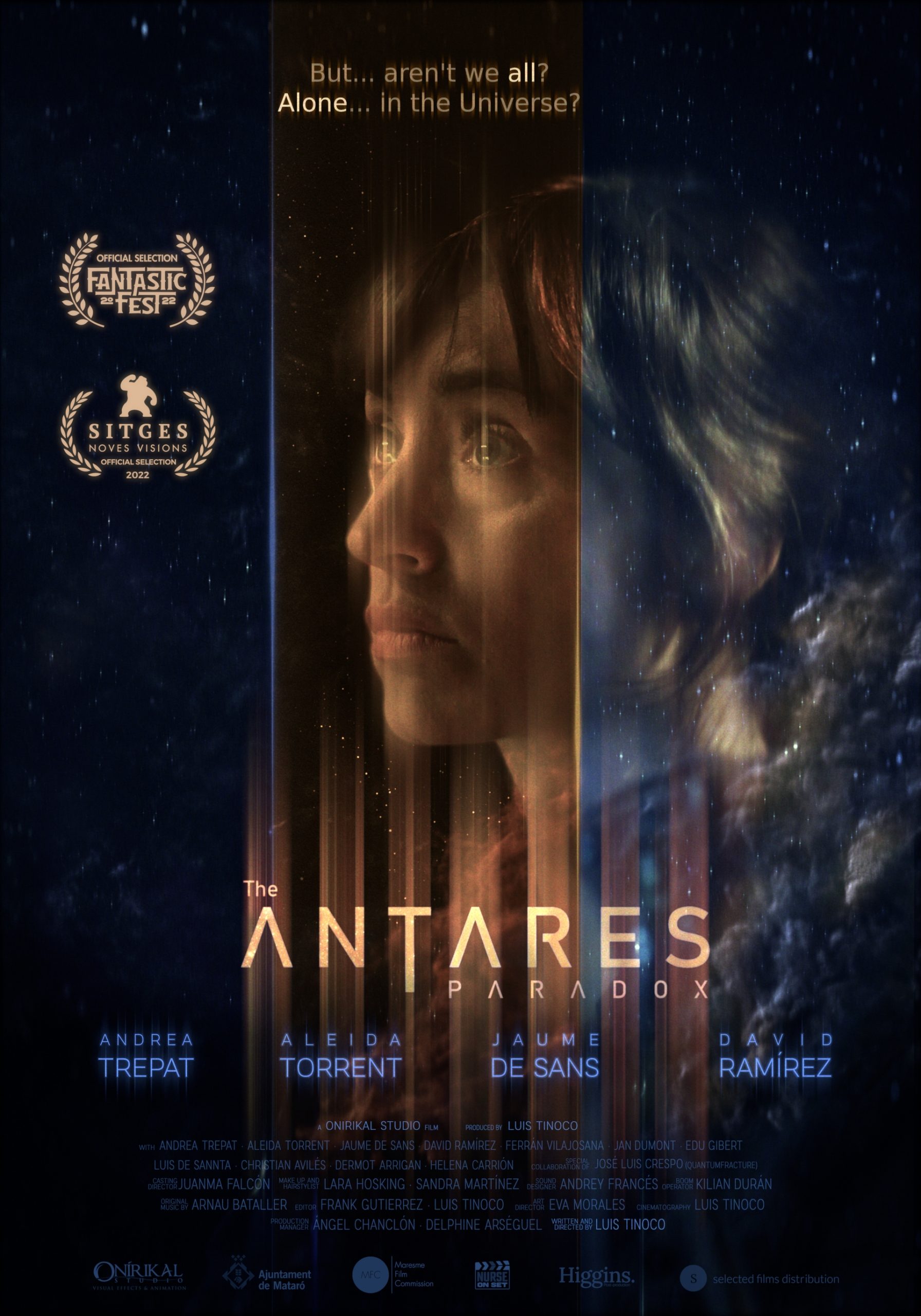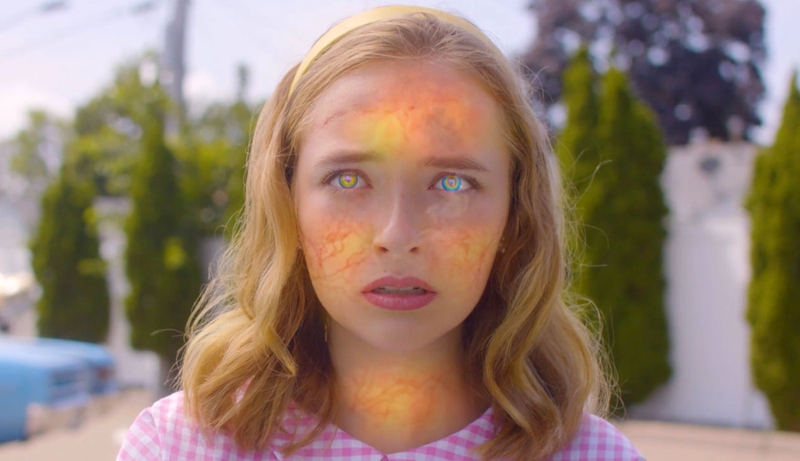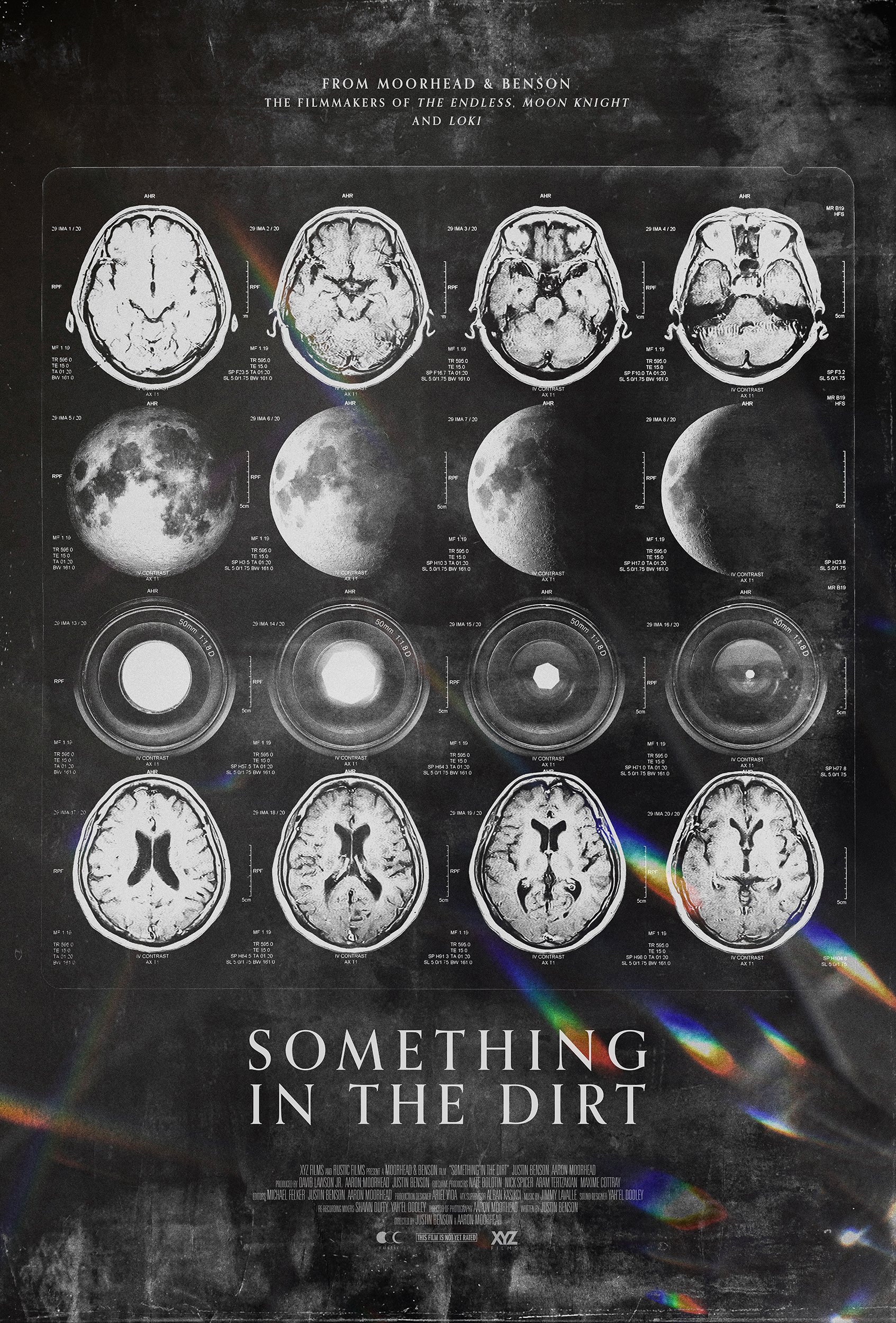Anomaly Film Festival brings “truly indescribable” screenings to Rochester
Anomaly Film Festival brings "truly indescribable" screenings

For the past four years, Anomaly Film Festival has been a hotspot for the freshest independent genre films from around the world. Hosted by The Little Theatre in Rochester, New York —the birthplace of film— there’s no better place for a cinematic experience like this. Anomaly, meaning “something that deviates from what is standard, normal, or expected,” is a fitting name for the festival, as it presents a range of horror, science fiction, fantasy, action, dark comedy and “truly indescribable” feature films and shorts.
In a review of this weekend’s highlights, take a look at Anomaly’s most interesting showcases of the sweet and sour sides of our imaginations.

The Antares Paradox Review: An Emotional Sci-Fi Thriller on Sacrifices for Science
Piper Starnes
Described as a “soulful sci-fi” in search of a species in the stars, Luis Tinoco’s outstanding directorial debut, The Antares Paradox (La paradoja de Antares), does so much with so little. It encapsulates the stressful intensity and bittersweet emotions of the sacrifices required to balance work and life priorities. Yet, it’s an intergalactic existential dilemma that doesn’t even have to leave the Earth, let alone a single room.
Filmed in one location, The Antares Paradox follows astrophysicist Alexandra Baeza (Andrea Trepat) on an adamant quest to confirm extraterrestrial life. While a treacherous thunderstorm wreaks havoc on the SETI (Search for Extraterrestrial Intelligence) facility building, Alex is still on the clock, working all by herself on this once-in-a-lifetime discovery. When she gets a phone call that her father is dying in the hospital, she is forced to decide what’s more important —being there for her family or achieving what no other scientist has done before.
Amongst the chaos of flashing computer lights, blaring alarms and interrupting calls from Alex’s boss, Trepat’s grasp on her character in each scene was impressive and never boring. The expressions of urgency made her character’s devotion to scientific discovery and passion for space not just believable but contagious.
While The Antares Paradox is practically a one-woman show, it could not have been as fulfilling without Arnau Bataller’s film score. Everything good about this movie was only made better with the music.
Cinema’s greatest space explorations and alien interactions have always been accompanied by exceptional soundtracks. Hans Zimmer scored Interstellar, Harry Gregson-Williams scored The Martian, and John Williams scored Star Wars, E.T. the Extra-Terrestrial, and Close Encounters of the Third Kind. These kinds of stories make us wonder if we are truly alone in our universe. And it’s the music that makes us feel a presence…that is, if there’s really something or someone out there.
It’s undoubtedly worth watching The Antares Paradox in its entirety, but bear in mind what the title suggests. The thrilling countdown of the film’s last moments and Alex’s final decision is unexpected but respectable.
Anomaly’s “Surreal and Spooky Saturday Shorts” Review
Piper Starnes

A sure sign of a good short film is its ability to get to the point without rushing or dragging on. Day three of Rochester’s Anomaly Genre Film Festival kicked off with “Surreal and Spooky Saturday Shorts,” a back-to-back screening of twelve 3-20-minute films of varying budget sizes, experience levels and countries of origin.
The opening short, Welcome, revived a generations-old fear of mannequins coming to life—a short and sweet nod to The Twilight Zone and Doctor Who. UPYA, on the other hand, was a reflective glimpse into what life could’ve been like for a character who takes his own life.
Each short featured something special and unsettling, but all the while entertaining.
Rochester Institute of Technology graduates Siobhan Gannon and Eryk White submitted their capstone project, Limelight, to Anomaly. This fever-dream-like film features a gameshow host who can’t seem to let go of his heyday in the lights, camera and action. The 3D animations have a bizarre, nostalgic kind of charm like the clips you’d see after bowling a strike at the alley. Still, it’s evident that a lot of tedious work went into pulling it off.
O, a 14-minute body horror film, is about a woman who can’t stop sticking her hand in o-shaped places. Weird right? It starts with a hole in the wall, then a mug of boiling water, a vacuum tube and finally, her own body. A metaphor for addiction, O follows Jasmin (Nadine Scheidecker) as she becomes obsessed with finding something to satisfy her self-destructive compulsion. Shot beautifully in black and white, director Dominik Balkow forces you to imagine the coloration of Jasmin’s burns, bruises and blood. While not excessively gory, it does require some willpower to keep your eyes on the screen.
Anthony Cousins’ Every Time We Meet for Ice Cream Your Whole F*cking Face Explodes did in 7 minutes what should have happened in Edward Scissorhands. The somewhat-human kid with an unintentional tendency to cause harm falls in love with the kind-hearted, normal kid who is understanding. Except this had a much more delightful ending. With its nicely-done special effects of bloody explosions, this is the cutest and most disturbing mini-movie ever.
A lot of what’s brought to Anomaly makes you ask, “what the heck did I just watch?” Even if there’s no clear answer, the amusing experience is unmatched.
Something in the Dirt
CM McCambridge

Justin Benson and Aaron Moorhead’s Something in the Dirt is a fun horror-comedy brimming with answers, questions, and, on occasion, answers to those questions.
Told from the perspective which slowly takes on that of a dramatized documentary film, Something in the Dirt explores paranoia and conspiracy in a new light by taking an unreliable narrator and not only putting him in control of the storytelling, but of the events as well.
With excellent and often reserved effects and lighting which create an almost believable supernatural, it’s difficult not to fall for the film’s charm, captured perfectly in Justin Benson’s performance as Levi.
Two neighbors, John and Levi, encounter an object which brings supernatural phenomena to life in Levi’s new apartment. While Levi goes from excited to cautious, John gradually loses himself to the madness of repeatedly witnessing something he cannot understand with what he already knows. As the duo dig more and more into the mystery, more of their pasts and beliefs are revealed, both to the audience and to each other.
In many ways, the film feels intent to explore the problem of those who fall so deep into conspiracy theories that they lose all sense of reality, with every question turning up an answer so ludicrously simple that it must be the only one – an answer based on nothing but a connection that remains tertiary at best. It would be incredibly unsettling to watch, if not so incredibly well paced with jokes and new “reveals.”
In a way that is by no means a coincidence, the film itself evokes the feeling of falling down a rabbit hole, with more and more information being shown quickly enough that the chance to examine its more pernicious elements is nonexistent. In so many ways, it feels real, as if these characters are in this world currently, having been the very real subjects of these unexplainable phenomena.
Audiences in Something in the Dirt face more than just unanswerable questions, but also the greatest source of fear in our current age: a man, utterly divorced from reality, who has convinced himself that he alone, is correct.
The Harbinger
CM McCambridge
It would be difficult to talk about Andy Mitton’s The Harbinger without first addressing the masked elephant in the room — this is a film about the COVID-19 pandemic. Full stop.
Whereas many directors would attempt to dress up its story and to make it about the pandemic itself, Mitton was open with his inspiration, having directly cited his fear of being forgotten in the face of an insurmountable death toll.
The Harbinger crosses between dreams and reality with ease, using its locations and performances to present a version of events which remains shrouded in mystery as it slowly unmasks to reveal its antagonist and plot.
There are fewer horror films as of late which use their literal set pieces more effectively than The Harbinger. Whereas something like Smile has large set piece moments presented with visual effects, there are almost no actual sets that can be remembered with as much ease as the exposed brick and abandoned architecture Mitton used to tell his story.
There’s a deeper fear at play here other than simply dying. Horror villains attacking their victims in dreams is nothing new, but Mitton explores both the fears of being forgotten and of having spread death through a result of a person’s own actions. These characters present lives within a version of the pandemic which borders on the unbelievable, two people who are not bound to go into work and be exposed, who are able to both afford and use delivery services for everything they need. Somehow, this is the highest roadblock when it comes to the suspension of disbelief.
It would be tawdry to say anything more without addressing the film’s pacing. While it’s true that a person should always leave an audience wanting more, the credits feel as if they start rolling far too soon.
The ending builds and relieves tension only to momentarily build it back up once again before a wall of text steals the end away. In many ways, however, this feels appropriate. Dreams rarely play out with an act structure, they just end. Unceremoniously. Waking up ends any nightmare in a breath.
One more Anomaly moment
I would be remiss if I didn’t at least mention Friday the 13th: Part 3 which had been shown in 3D — quite the operation with film projectors. It was great, and I mourn for anyone who has had to see these shots obviously composed for 3D on a normal screen. My experience overall was mixed, as the man seated behind me decided to add the least funny riff track imaginable throughout the entire film. I also mourn for anyone else who may have been within earshot.





